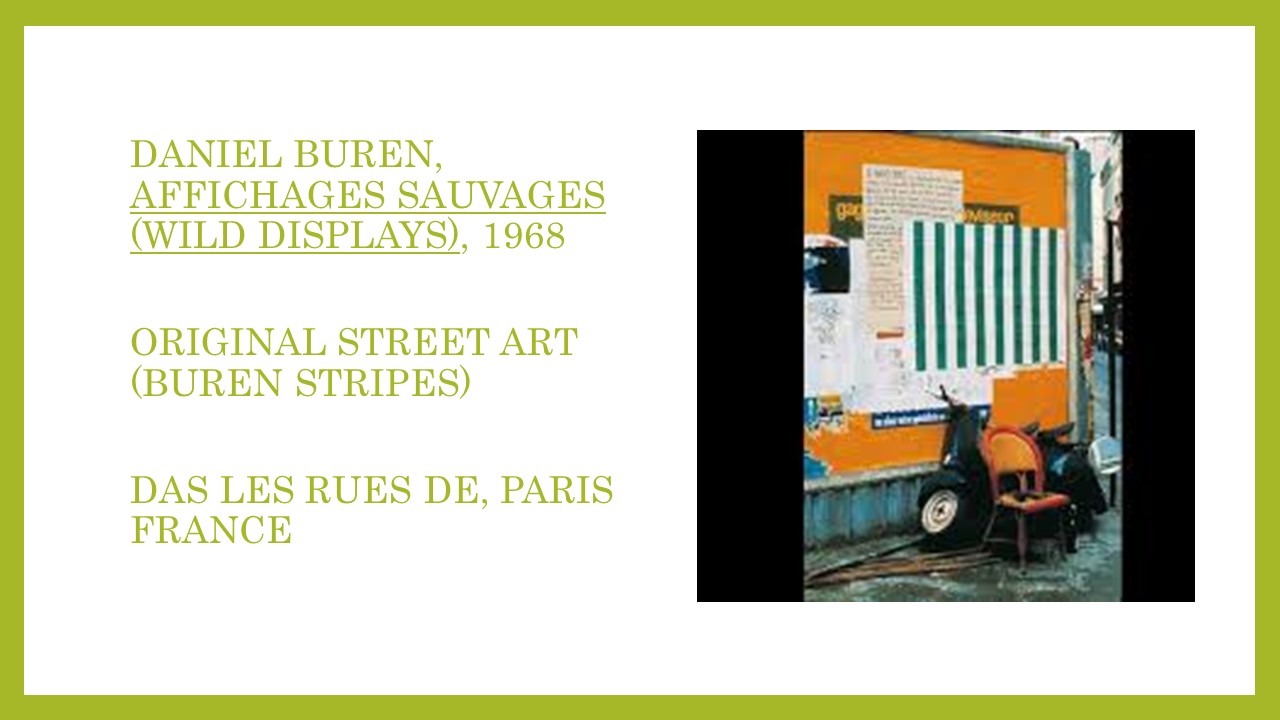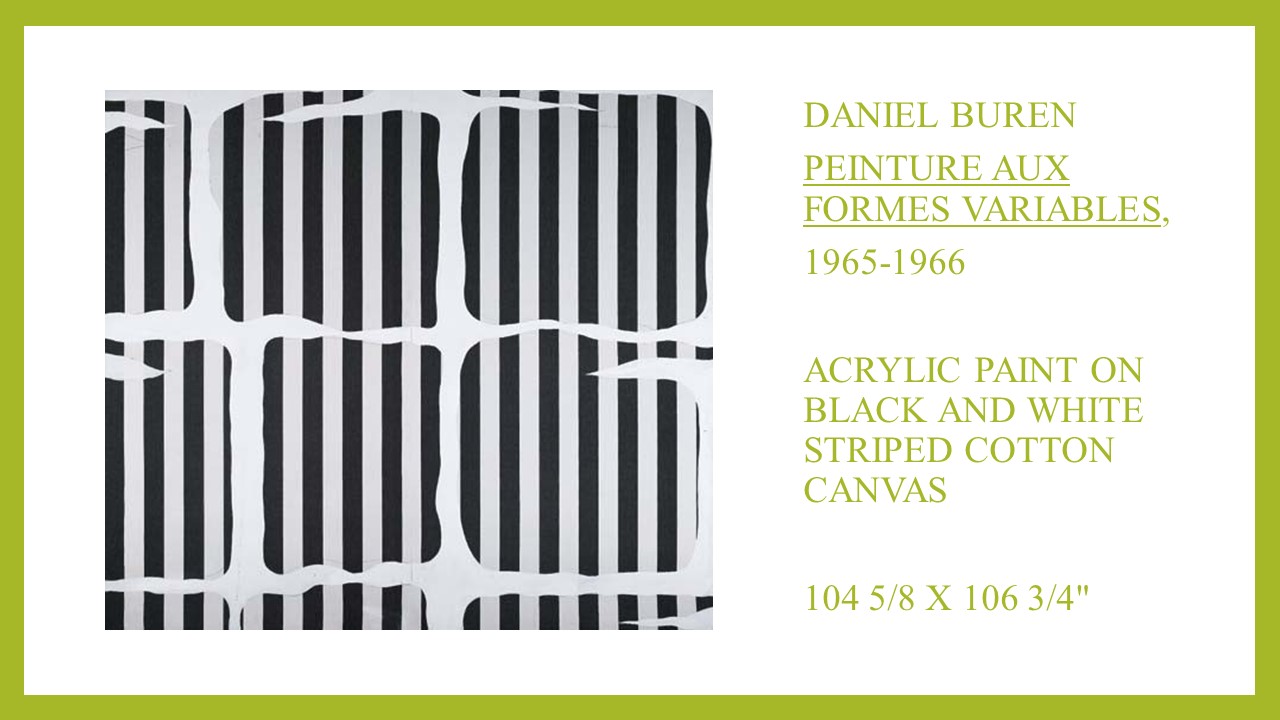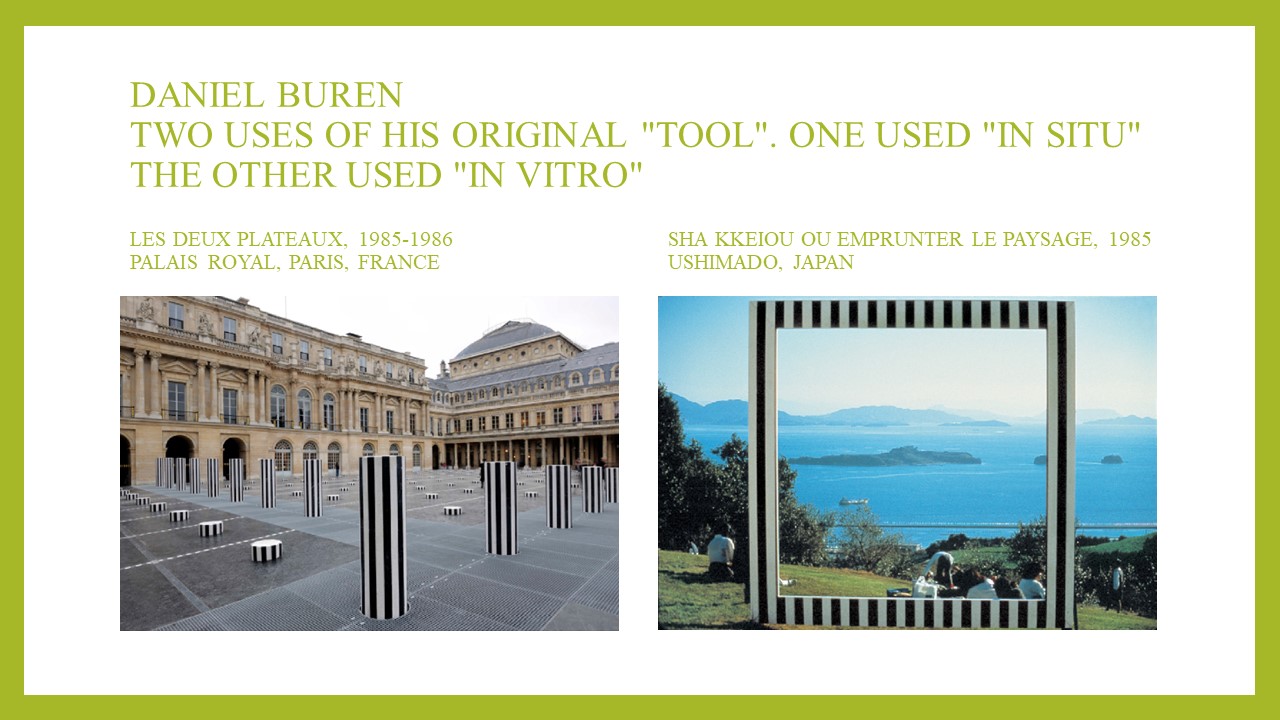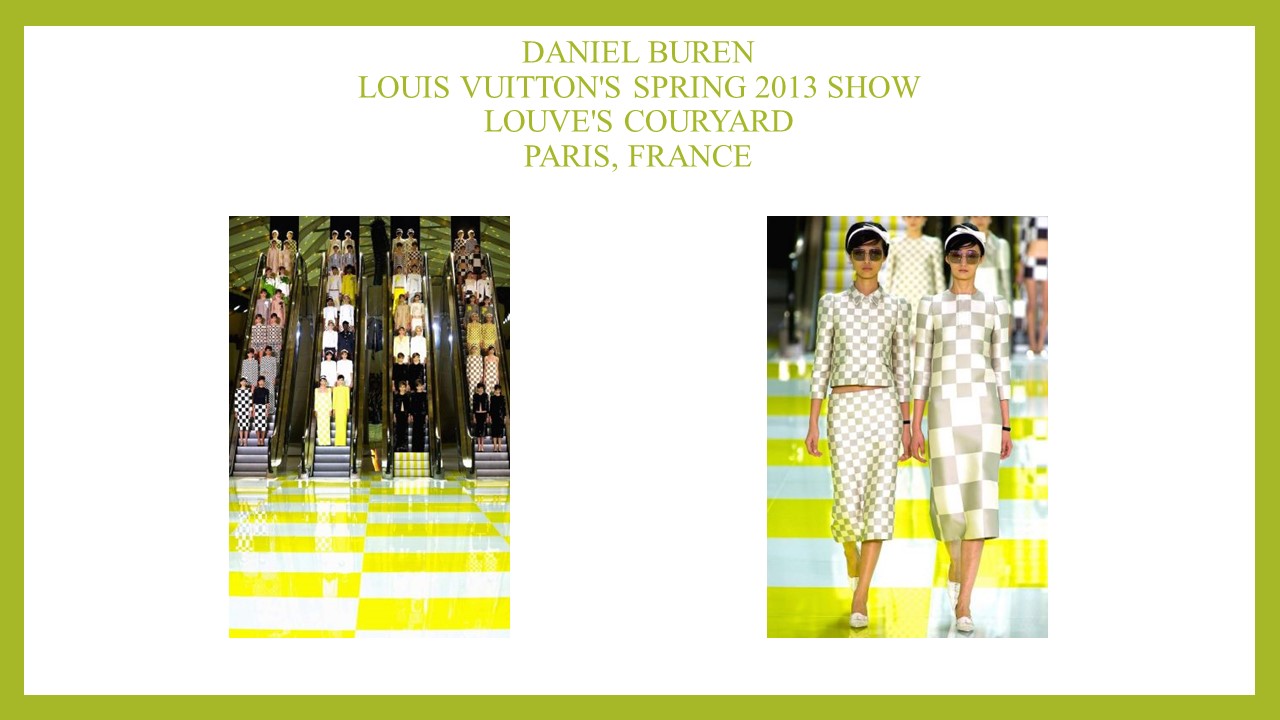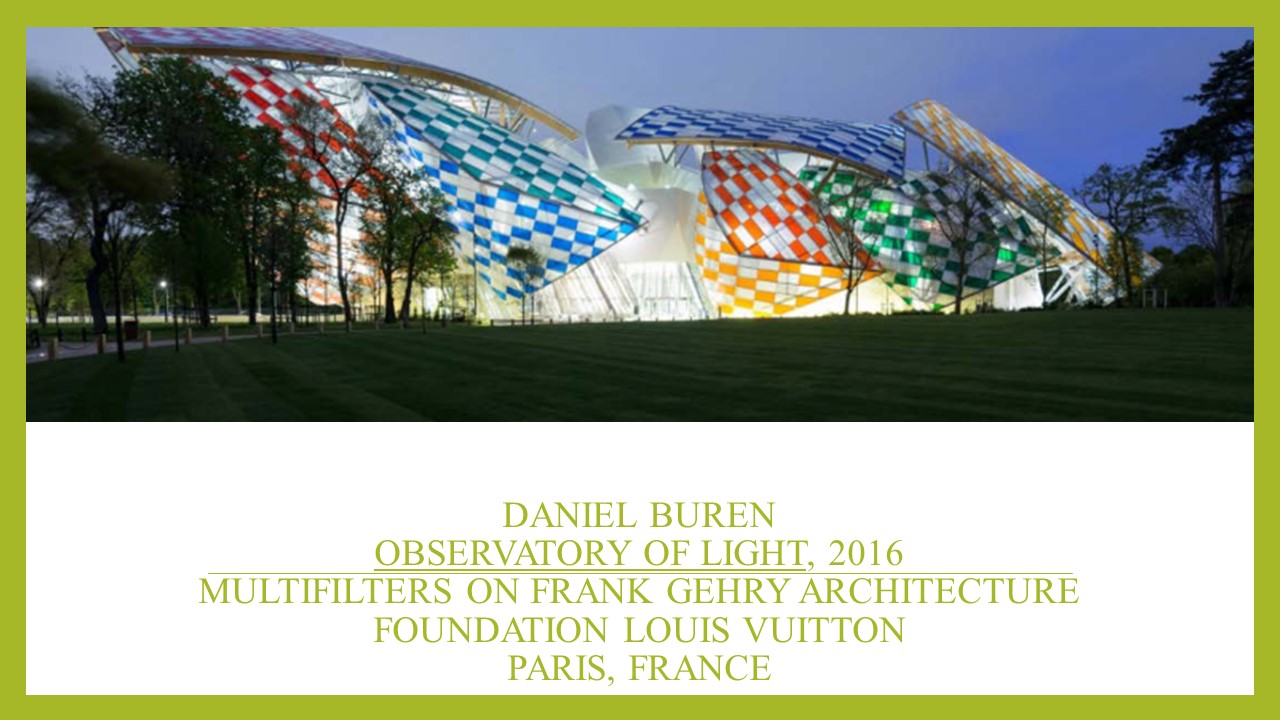Daniel Buren
Daniel Buren’s work epitomizes the truism that all of life is impermanent. As he describes it, “My work is site specific, so I know nine out of ten, it won’t last. It’s not transportable and it often ends up being destroyed. It differs in many ways from more conventional art and that’s what I like most about it. If you have a painting, you can just stick it in the basement. When you actually live inside the work, you either have to get used to it, or destroy it.”
Buren is a French conceptual artist—his multidisciplinary oeuvre includes sculptures, paintings, installations, public art, performances, film, and writing. He was a forerunner in the Conceptual Art era and today’s street artist—in the 60’s he was making unsolicited public artworks on the streets of Paris while shunning galleries and museums. His work ushered in art that was both anti-establishment and anti-consumerist.
His first job after art school was painting murals at a hotel in the US Virgin Islands. According to Buren, the large-scale works helped him “to get clean” from traditional art historical influences. In 1965, he spotted the striped fabric that became the “tool” for his work. He set up hundreds of “posters” around Paris using this signature canvas awning and called them Affichages Sauvages. He enjoyed using them because their uniformity was “totally uninteresting and completely banal”. Buren added irregular white paint to keep them from being perceived as ready-mades. These muted gestures, as in Peinture Aux Formes Variables, would win him Japan’s Praemium Imperiale for painting in 2007.
He noticed that depending on where he placed the uninteresting stripes, they could become interesting. He said, “When you put such a “tool” in different spaces, it’s not saying the same thing. How is that possible?” See Beyond Object where the same stripes represent the water’s current and the wind’s flow both in the same place. He was known for examining how the stripes transformed as they traversed physical and conceptual boundaries. This challenges his audience to question their traditional art views.
He often works in collaboration with artists, designers, and architects. He worked on Louis Vuitton’s Spring 2013 Show. He not only designed the runway in the Louvre’s courtyard but had an input in designing the clothes. In 2016, he created the Observatory of Light for the foundation.
Looking over his oeuvre, Buren comments, “Of course it wasn’t a programme, but when I see it in retrospective it looks well thought out. So does the idea of quitting the studio, but for me it was interesting to quit the studio to analyse why an artist needs a studio.” This decision was the first step towards Buren’s concept of working ‘in situ.’ It meant his art had to be viewed in a certain place where it plays with space and the audience had to go to it.
He said, “Everything that makes these works possible is not mine. They have nothing to do with my work! So, what I consider a work of mine, as I present it to the public, is a total integration of a lot of foreign objects or foreign architecture or foreign colour.” His representative, Lisson Gallery, comments, “When the works we first exhibited, Buren was still making a name for himself, and the world was getting to grips with conceptual art. Some 45 years later, we now see the same works through the lens of the momentous and historical projects he has realized since. As a viewing experience it will indeed be at once very similar, and yet completely different.”
The film, À Contre-Temps, À Perte De Vue, by Buren can be seen here.
Learn more about Daniel Buren at his website.
His galleries are Xavier Hufkens, Lisson Gallery, Buchmann Galerie, and Bortolami.
PLEASE SEE PORTFOLIO BELOW





